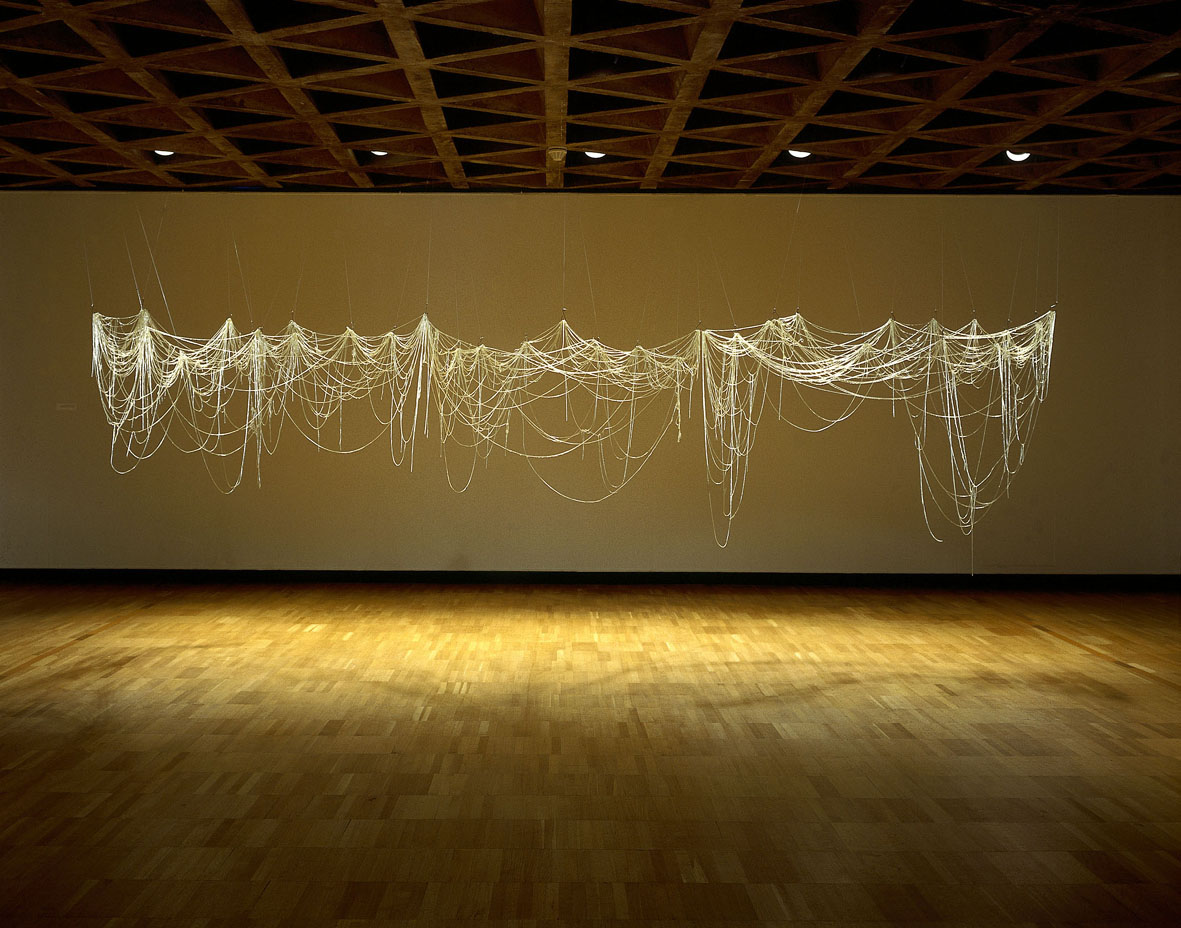 Eva Hesse, Right After, 1969
Eva Hesse, Right After, 1969Hot on the heels of minimalism in the late 1950s and early 60s, with its emphasis on the "object-ness" of art, came the post-minimalists: artists who called attention to the physicality of their materials, focused on process rather than end product, and welcomed the chance effects of environmental forces on their work. Eva Hesse, who escaped to the U.S. from Nazi Germany with her family at the age of two, embraced the de-objectification of art in her sculptures by favoring malleable materials (latex, cheesecloth, twine) that would deteriorate over time. Hesse died of a brain tumor in 1970 at the young age of 34, but her use of "female" techniques that included spinning, sewing, and knitting, along with the physically suggestive nature of much of her work, helped turn her into a feminist icon.
 Vertiginous Detour, 1966
Vertiginous Detour, 1966 Contingent, 1969
Contingent, 1969On the occasion of a 2006 show of Hesse's work at the Jewish Museum in NYC, Grace Glueck of the New York Times wrote:
Not many contemporary artists have approached the uncertainties and contradictions of making art as resolutely as Eva Hesse. Her challenges to Mimimalism, the reigning movement of her day, while using some of its vocabulary and serialist aesthetic, helped create a genre that went beyond Minimalism's anti-Expressionism and rigidity of form.
Using materials then new to sculpture, like latex and fiberglass, she made work that hung, draped, dangled, looped, drooped, slumped, webbed, protruded breast- and penislike, imitated skin, suggested bodily orifices, spilled or just lay on the floor.
Art that wasn't "art" was her aim. "I wanted to get to nonart, nonconnotive, nonanthropomorphic, nongeometric, non, nothing, everything, but of another kind, vision, sort, from a total other reference point," she wrote in an exhibition statement in 1968.

Tomorrow's Apples (5 in White), 1965

On June 2, Derrick Cartwright, the Seattle Art Museum's director, will present a lecture exploring work made by the 28-year old Hesse in 1964, during a one-year sabbatical in Germany. Hesse had returned to Germany at a point when she reportedly perceived her career to be at a dead end. For much of her time there she worked in an empty textile factory in Kettwig-am-Ruhr, where she produced small-scale paintings and drawings as well as her first sculptures.
 Untitled, 1964
Untitled, 1964If you're not a SAM member it might just be worth joining for this — or you can tag along with someone who is. (Members $5, guests $9; more info here.)

Transformations — The Sojurn in Germany 1964/65